Understanding the significance of gemstone color is crucial when choosing the perfect diamond. Surprisingly, the evaluation of diamond color in most gem-quality diamonds is based on the absence of color.
A structurally flawless and chemically pure diamond, like a drop of pure water, possesses no color and therefore holds greater value. During your search for the ideal precious stone, you may have come across something called the Diamond Color Chart: Diamond Color-Grading Scale.
The diamond color grading scale measures the degree of colorlessness in a diamond by comparing it to “master stones” with predetermined color values under specific lighting and viewing conditions.
While many of these color differences in diamonds are extremely subtle and may go unnoticed by the casual observer, they have a significant impact on the quality and price of the diamond.
Continue reading to delve deeper into the world of diamond color and the color-grading scale!
DESIGN YOUR OWN ENGAGEMENT RING: START WITH A SETTING OR START WITH A DIAMOND. IT’S REALLY UP TO YOU!
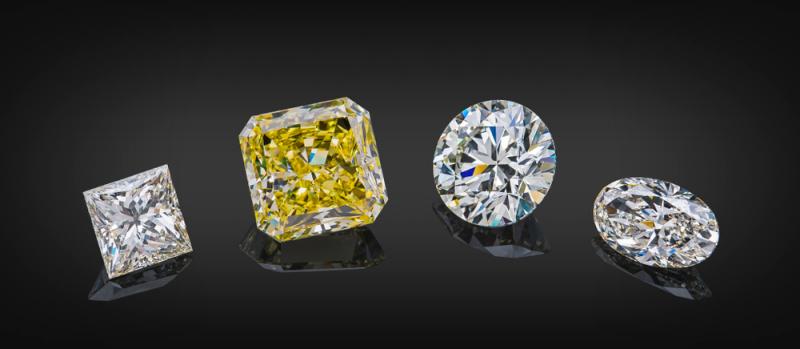
Diamond Color
Diamonds are often perceived as perfectly transparent, but the truth is that they can exhibit subtle colors due to trace elements present in their composition. While color is one of the four C’s used to assess diamonds, its significance lies in the quality and rarity it represents. The closer a diamond is to colorlessness, the higher its value.
Colorless diamonds are highly prized for their rarity. Natural diamonds, which originate from the earth, may have slight yellow, gray, or brown hues due to impurities acquired during their formation. These diamonds are evaluated based on their tone, color, and saturation, all of which are considered in the diamond color scale.
Diamond color refers to the actual color present in the stone, which can range from white and yellow to brown, pink, or blue. Tone indicates the degree of color in a diamond, varying from bright to dark. Saturation, on the other hand, refers to the intensity and depth of these hues.
It’s important to note that colorless diamonds generally lack saturation but possess remarkable fire and sparkle, making them highly desirable.
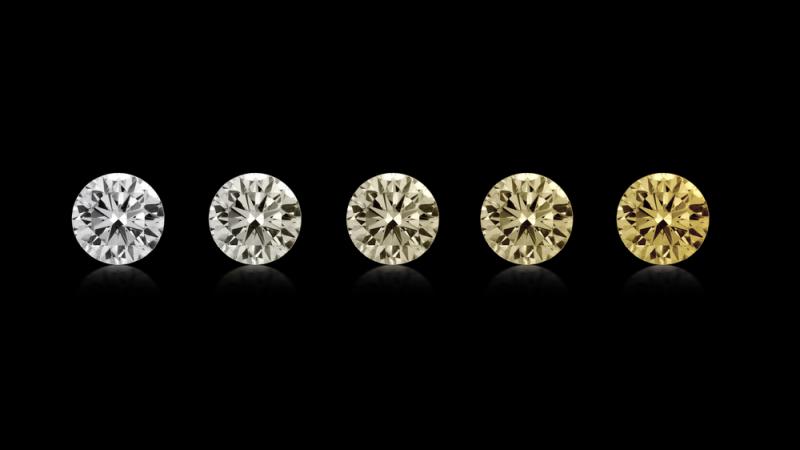
What Is The Color-Grading Scale?
The Gemological Institute of America (GIA), the renowned diamond certification lab, has established the International Color Scale to ensure consistency in diamond color grading. This scale, along with clarity assessment, forms the basis for GIA’s comprehensive evaluation of diamonds.
To obtain GIA certification, a diamond must receive unanimous approval from a panel of five experts. Today, the majority of diamonds are graded using the GIA color scale, whether or not they carry GIA certification.
The official GIA scale evaluates the presence of brown, yellow, or gray hues in white diamonds using letters from D to Z. Gemologists assess color by placing diamonds face down on a white surface to enhance any color deviations. Diamonds graded as “D” should exhibit a colorless and pure white appearance, while those graded as “Z” may have a noticeable yellow tint. It’s worth noting that diamonds with grades ranging from N to Z are rarely used in jewelry.
Despite having varying degrees of color, all diamonds graded from D to Z are classified as white. Fancy colored diamonds, such as pink, yellow, and blue diamonds, are evaluated separately and are not part of this grading scale.
You may wonder why the color grading chart starts at the letter D. Prior to the introduction of the GIA’s D-through-Z Color Grading Scale, there was no standardized system for diamond color assessment. Previous methods included ambiguous terms like A, B, and C, Arabic numerals (0, 1, 2, 3), Roman numerals (I, II, III), and descriptive phrases like “blue-white” or “gem blue,” leading to confusion and inconsistent grading.
To establish a clear and universally recognized standard, the GIA decided to start fresh with no ties to previous systems. Consequently, the GIA scale begins with the letter D. While some individuals still use other grading systems, none possess the clarity and widespread acceptance of the GIA scale.
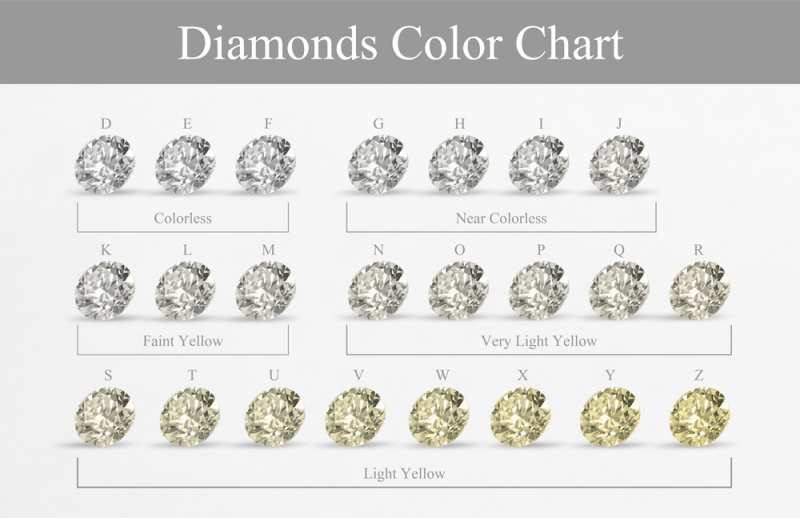
Diamond Color Chart
We choose colorless and near-colorless diamonds for jewelry because they exhibit exceptional fire and brilliance. While colorless diamonds are rare and stunning when set in platinum or polished white gold, near-colorless diamonds are also an excellent choice and offer great value.
Colorless Diamonds
When examining diamond color, it can be challenging to discern the differences between color groups. D, E, and F are considered colorless grades. However, these subtle distinctions can significantly impact the diamond’s quality and price.
The grading system begins with D as a result of the GIA’s desire to create a new and innovative grading system, distancing itself from previous systems that used alphabet letters, Arabic and Roman numbers. Despite its unconventional start, diamond buyers quickly adapted to this new system.
Diamonds with a D, E, or F grade are completely colorless, exhibiting no visible color even under the scrutiny of a well-trained specialist using ten times magnification. Only an electric colorimeter would be able to detect these minimal differences.
To the unaided eye, customers cannot distinguish between the three colorless grades as they do not possess any visible or undesirable yellow or brown tints.
However, D-graded diamonds are the most colorless, while grades E and F exhibit similar characteristics with no detectable color even upon close examination. The costs of colorless diamonds are comparable regardless of whether they have a D, E, or F grade.
Due to the delicacy of the color in colorless diamonds, it is important to set them in silver or platinum jewelry to preserve their radiance. Gold settings, on the other hand, can reflect their yellowish tone, making a colorless diamond with a D-F grade appear more similar to a diamond in the K-M range.
Near-Colorless Diamonds
Near-colorless diamonds are graded from G to J.
Impurities trapped within diamonds, such as nitrogen, contribute to their color. Nitrogen absorbs blue and violet light, resulting in a warm appearance, though the actual hue is difficult to discern until they are compared to colorless diamonds.
G-graded diamonds are among the most popular near-colorless diamonds due to their minimal tint and lower cost compared to colorless options.
H-graded diamonds show a slight hue, with a faint yellow tone visible to the naked eye.
I and J-graded diamonds have a yellowish tone, with the color typically being more noticeable than in H-graded stones. Diamonds in the I-J range can cost half the price of diamonds in the D range.
While G-J diamonds exhibit some color, they are well-suited for platinum or white gold settings, which typically minimize any hint of color in a diamond. Within the G-J range, each diamond grade tends to increase in price by 10-20%.
Faintly Colored Diamonds
Diamonds with grades ranging from K to M are considered faintly colored. These gems possess a light yellowish color, appealing to individuals who prefer yellow hues.
Smaller diamonds, particularly those under 0.50 carats, may appear colorless or near-colorless when set in jewelry. By following these guidelines when purchasing a diamond, you can potentially save money and end up with a diamond that appears to have a higher color grade.
Colorless and near-colorless diamonds are generally more expensive than faintly colored diamonds. Customers appreciate the subtle and captivating color combined with the durability and longevity of diamonds, leading to the growing popularity of softly colored diamonds.
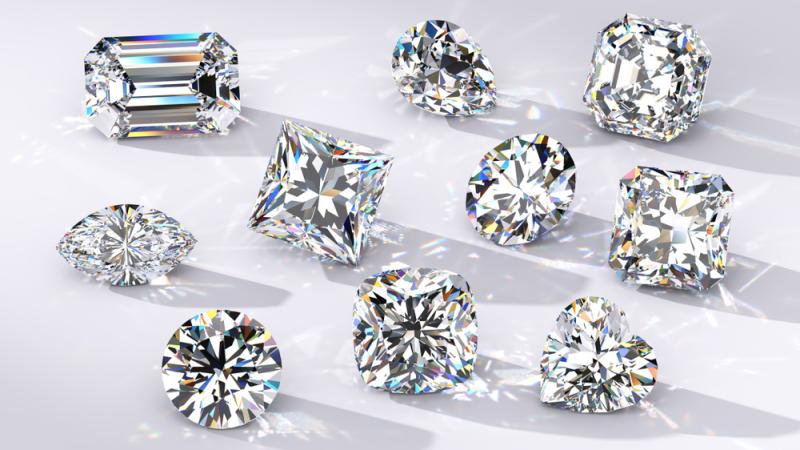
Diamond Shape And Diamond Color Connection
Certain diamond shapes have the ability to conceal flaws better than others. The cut or shape of a diamond can enhance its brilliance by reflecting light and minimizing the visibility of any imperfections.
When considering a diamond’s shape, it’s important to determine if it effectively conceals flaws or accentuates undertones. Additionally, you need to decide how far down the color grading chart you are willing to go.
If you are looking for a diamond in the following shapes, it is recommended to prioritize color over clarity in order to obtain the most visually appealing diamond within your budget:
Round Shape: Round diamonds are cut in a way that reflects more light, making them better at concealing lower color grades. As long as you choose a round-cut diamond with a color grade of J or higher, there should be no visible color.
Princess Shape: For princess-cut diamonds, it is advisable not to go below an I color grade.
Emerald Shape: The emerald cut was originally designed to enhance the color of emeralds. To prevent any yellow tint from being emphasized, choose a diamond in the D-H color range.
Cushion Shape: Cushion-cut diamonds tend to retain more color, so the color grade is particularly important. If you want to avoid any color implications, opt for a cushion diamond with a color grade of H or higher.
Pear Shape: Pear-shaped diamonds tend to reveal more color compared to other shapes, so color should be your main consideration. If you prefer white metals, look for a color grade of H or higher. However, if you prefer rose or yellow gold, you can go down to a K grade.
Oval Shape: Although color indications are less noticeable in oval diamonds, it is still important to prioritize color over clarity. Look for an oval diamond with an H color grade or higher.
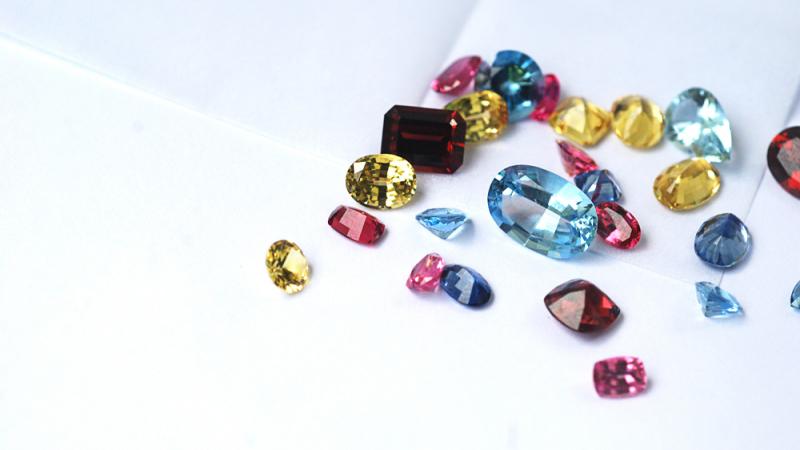
Fancy-Colored Diamonds
Diamonds come in various hues, including yellow, pink, brown, and gray, which are typically covered by the GIA rating system. However, some diamonds with shades of brown and yellow that go beyond the Z grade on the GIA scale are referred to as “fancy-colored” diamonds.
Fancy-colored diamonds have their own rating system because they exhibit colors that are outside the standard color spectrum. These diamonds are incredibly rare and can be found in every shade of the rainbow.
It’s worth noting that even white diamonds can be classified as fancy if they possess an iridescent luster rather than the traditional clarity seen in white diamonds.
Fancy-colored diamonds are sometimes produced in laboratories. These lab-grown gemstones have the same quality, durability, and hardness as natural diamonds, but they are generally less expensive. However, due to their rarity, they can still command higher prices compared to white or colorless diamonds.
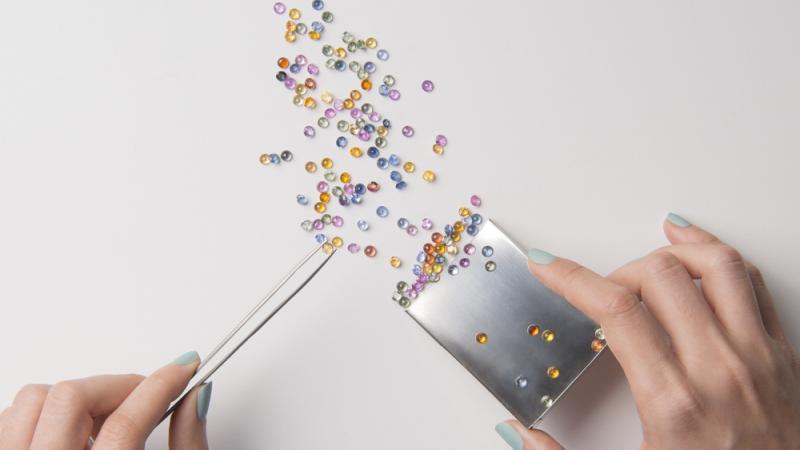
How Does The Diamond Color Determine Its Value?
Slight variations in color can significantly impact the price of a diamond, particularly if the color is noticeable to the human eye when the stone is viewed. In fact, diamonds with a slight tint of color are more common than completely colorless gems.
Colorless diamonds hold greater value and rarity compared to colored diamonds because they exhibit minimal color and possess exceptional brilliance.
Even within grading systems, slight variations in color can lead to price fluctuations of around 10%. A minor color imperfection can have a significant impact on the value of a diamond, potentially resulting in differences of hundreds or even thousands of dollars, especially when considering factors such as cut, carat weight, and clarity.
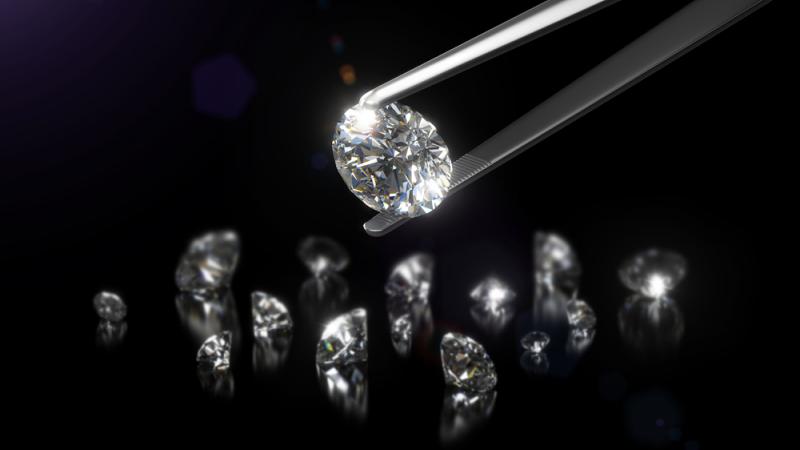
Does Carat Size Impact Diamond Color?
The carat weight of a diamond can influence its perceived color. Due to the presence of color within the diamond itself, larger diamonds tend to showcase their color more prominently compared to smaller ones.
For example, when comparing a two-carat J diamond with a half-carat J diamond, the larger diamond may exhibit a more noticeable color. Choosing the right combination of carat weight and setting can help minimize the visibility of color, particularly with smaller diamonds. If you are considering a larger diamond, it is advisable to select a stone with a higher color grade.
Ultimately, the most important factor is to find a diamond that you personally like and feel comfortable with, both in terms of its appearance and price. Your satisfaction with the purchase is what truly matters.
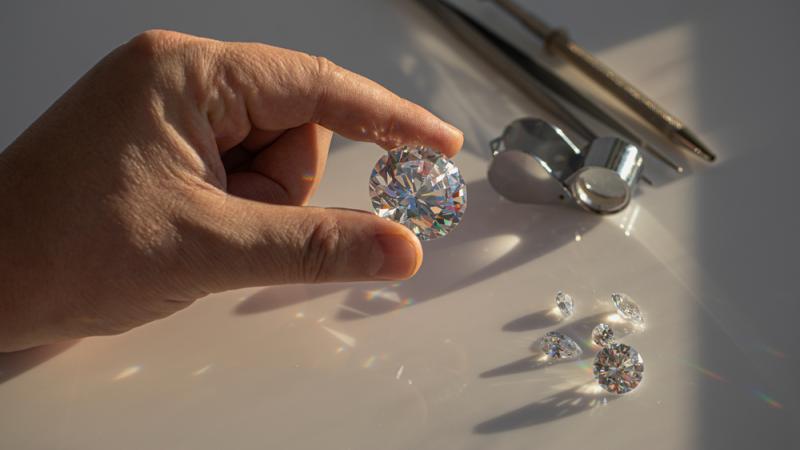
Conclusion
Let’s summarize the discussion about the Diamond Color Chart and the grading scale.
All four C’s—carat, cut, clarity, and color—contribute to the overall look and elegance of a diamond. Among these factors, color is considered crucial and comes second only to the cut. This is because our eyes are initially drawn to a diamond’s brilliance and then notice its color.
The diamond color chart explained in this article can help you determine which aspect to prioritize while searching for the perfect diamond. For the best value and the appearance of a colorless gem to the naked eye, consider diamonds in the G-J range. In larger diamonds, where color is more noticeable, opt for G-H if they weigh more than a carat, and I-J if they weigh less than a carat.
Rest assured, these diamonds will look just as good as those with higher color grades when set in a ring.


